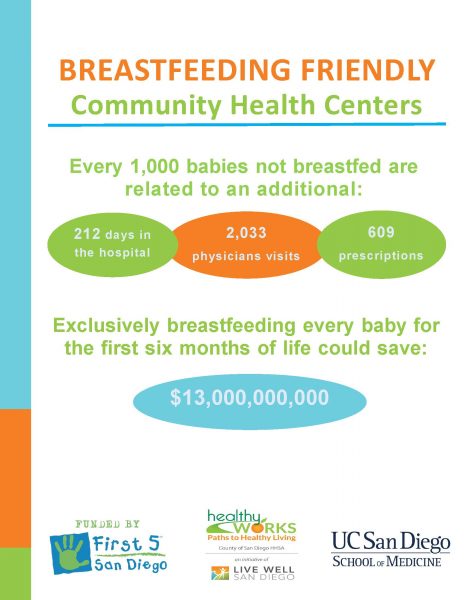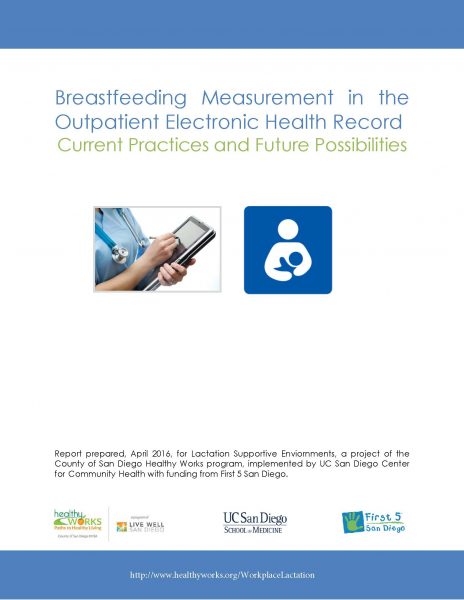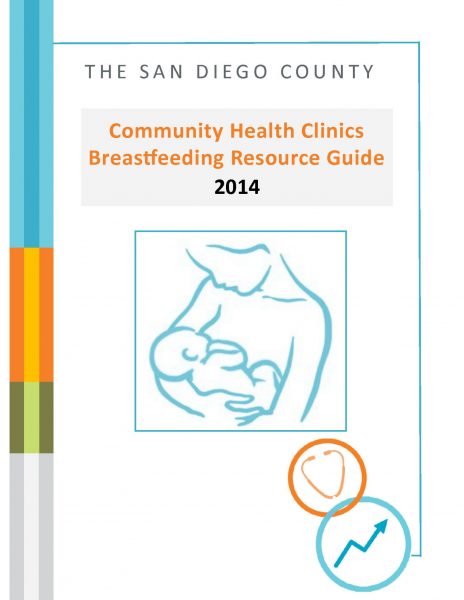
Community Healthcare Centers (CHC) are in a unique position to play a vital role in breastfeeding initiation and continuation. CHCs have the opportunity to provide care and education to families — both prenatally and postpartum — putting them in an especially important position to implement a quality improvement framework to optimize breastfeeding support.
LSE supports CHCs in their mission to become breastfeeding-friendly by addressing ten key strategies that promote breastfeeding and lactation accommodation.
LSE aims to enhance lactation support for clients and employees, reduce barriers faced by families initiating and maintaining breastfeeding, and promote healthier families and babies as well as future generations.

Breastfeeding-Friendly CHCs
DownloadSteps to Breastfeeding-Friendly Community Healthcare Centers
1. Lactation Accommodation Policy
Workplace lactation policies are good for everyone – children, parents, employers, and society. Breastfeeding reduces the risk of obesity, as well as infections and illnesses in infants, and lowers the risk of breast cancer and osteoporosis for mothers. Providing a breastfeeding-friendly workplace doesn’t only make sense for babies and moms, it also makes business sense. Businesses with lactation policies enjoy lower turnover rates, lower healthcare costs, less absenteeism and higher employee productivity and morale. Written policies provide and maintain effective lactation accommodations for all employees within the organization.
Key strategies include:
- Work with Human Resources to adopt/update a written lactation accommodation policy
- Develop a plan to communicate the policy to all current staff and new hires
- Train managers and supervisors to ensure compliance and implementation of the policy
- Determine a clean, private space that is not a restroom where employees can pump, the area can be a designated lactation room or temporary space
See below for sample policy or find more resources here Lactation Accommodation
2. Electronic Health Records (EHR)
Appropriate data capture and analysis for exclusive breast milk feeding has strong potential for identifying improved health outcomes, particularly through electronic health records (EHR). Few, if any other quality measures can claim such a powerful health predictor for two individuals via one quality measure. Additionally, most quality measures analyze the treatment of a condition or disease, rather than the prevention of chronic conditions as in the case of exclusive breast milk feeding.
Key strategies include:
- Conduct a comprehensive scan on breastfeeding data currently collected by EHR and other means
- Assess existing electronic health record (EHR) system abilities to track breastfeeding rates
- Develop a system to monitor breastfeeding data
- Integrate quality of care measures into Continuous Quality Improvement systems
- Partner with local agencies to share breastfeeding outcomes data
The report below, Breastfeeding Measurement in the Outpatient Electronic Health Record: Current Practices and Future Possibilities, summarizes subject matter experts and key stakeholder interviews around the current state of breastfeeding measures and the short- and long- range recommendations that may be useful to promote greater inclusion of breastfeeding measures in EHRs.
3. Financial Sustainability
Developing a financial plan that guides provision of breastfeeding services in a way that maximizes sustainability in the context of overall health services and resources provided will make offering lactation services financial sustainable.
Key strategies include:
- Develop a financial plan in order to maximize billing for lactation support services
- Address staff capacity to provide billable services
- Determine appropriate billing codes and payment sources
- Determine expected expenditures, investments and revenue
- Connect with County CPSP Coordinator and Medi-Cal billing to provide assistance
- Connect with other clinics that have a successful model for billing
4. Staff Education
Appropriate initial and ongoing staff training provides competency-based education for all clinic staff on topics necessary to establish and maintain the infant feeding policy and protocols that support delivery of comprehensive breastfeeding education and clinical services.
Key Strategies include:
- Assess staff training needs and develop annual training plan
- Implement competency based breastfeeding education and training for all staff and new hires
- Develop protocols that support delivery of breastfeeding education and clinical services
- Utilize staff with lactation credentials to provide breastfeeding education to all staff annually
- Utilize online training or community partners to assist with training needs
5. Infant Feeding Policy
The infant feeding policy serves to ensure that all staff understands their roles and responsibilities in supporting expectant and new mothers and their partners to feed and care for their baby in ways which support optimum health and well-being.
Key strategies include:
- Develop a policy that promotes, supports and protects breastfeeding as the normative standard
- Ensures all staff understand their roles and responsibilities in supporting infant feeding
- Develop a way to communicate the policy to all staff annually and during new hire orientation
- Ensure all staff receive training to enable them to implement the policy as appropriate to their role
- Display the policy in areas that serve mothers, babies and young children
6. Breastfeeding-Friendly Office Environment
It is important that there are policies in place that establish and maintain an appropriate clinic environment that will demonstrate the support for an promotion of breastfeeding.
Key strategies include:
- Establish policies and procedures that support a breastfeeding-friendly office environment
- Communicate the breastfeeding-friendly policy/procedure to all staff and new hires
- Use and display noncommercial materials that promote breastfeeding such as posters, flyers, signage, magazines, etc.
- Ensure there is a comfortable location for mothers to breastfeed while waiting for appointments
7. Clinical Services
Appropriate clinical services promote and support breastfeeding for the mother-baby dyad as optimal infant feeding and nutrition.
Key strategies include:
- Promote and support breastfeeding for the mother-baby dyad
- Provide access to lactation experts for every mother-baby dyad, even if they are not breastfeeding
- Strive to schedule an infant feeding assessment within 48 hours of hospital discharge
- Establish a triage system for addressing breastfeeding concerns
- Provide breastfeeding education resources and materials
8. Community Resources
The Community Resource Guide provides information that will encourage collaboration with local agencies and health professionals to ensure continuity of care and breastfeeding support in the community. The resource guide will provide information on a large number of resources available. There may be additional location specific resources that you should try to identify in your area.
Key strategies include:
- Identify and collaborate with local agencies and professionals to improve breastfeeding support
- Communicate with local agencies, professionals and birthing hospitals
- Utilize the Community Resource guide provided by the LSE project to help identify local resources
- Establish collaborative agreements and referral systems
9. Collaboration
The Breastfeeding-Friendly Community Healthcare Center forum provides opportunities for CHCs that include, but are not limited to seeking collaboration, sharing information, and asking questions in an online environment. The forum acts as a support group where CHCs can grow together and learn from one another. The forum allows CHCs to collect and provide feedback with little to no time restrictions.
Visit the forum here: Breastfeeding-Friendly Community Healthcare Centers Forum
Key strategies include:
- Refer to the Breastfeeding-Friendly Community Healthcare Center forum
- Collaborate with other CHCs engaging in breastfeeding-friendly practices via the online forum, meetings, etc.
- Collaborate with community organizations such as WIC to enhance your lactation support services
Reports and Community Resource Guide
Assessments and Sample Policies
Financial Sustainability Training
Developing a financial plan that guides the provision of breastfeeding services in community health centers will make offering lactation services financial sustainable. This training covers how to maximize sustainability in the context of overall health services and resources provided.
Breastfeeding-Friendly Community Healthcare Center: Financial Sustainability Training



